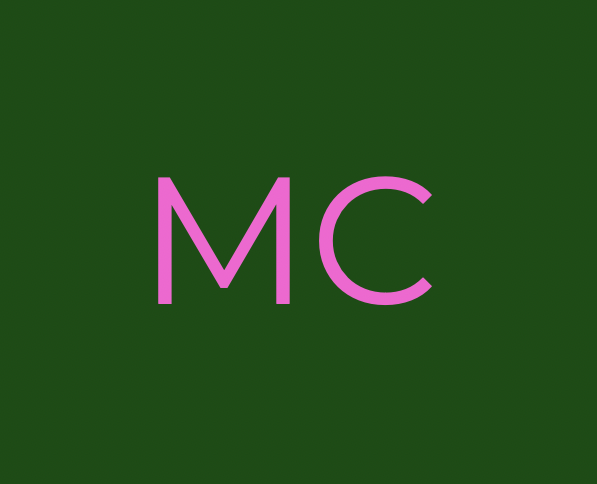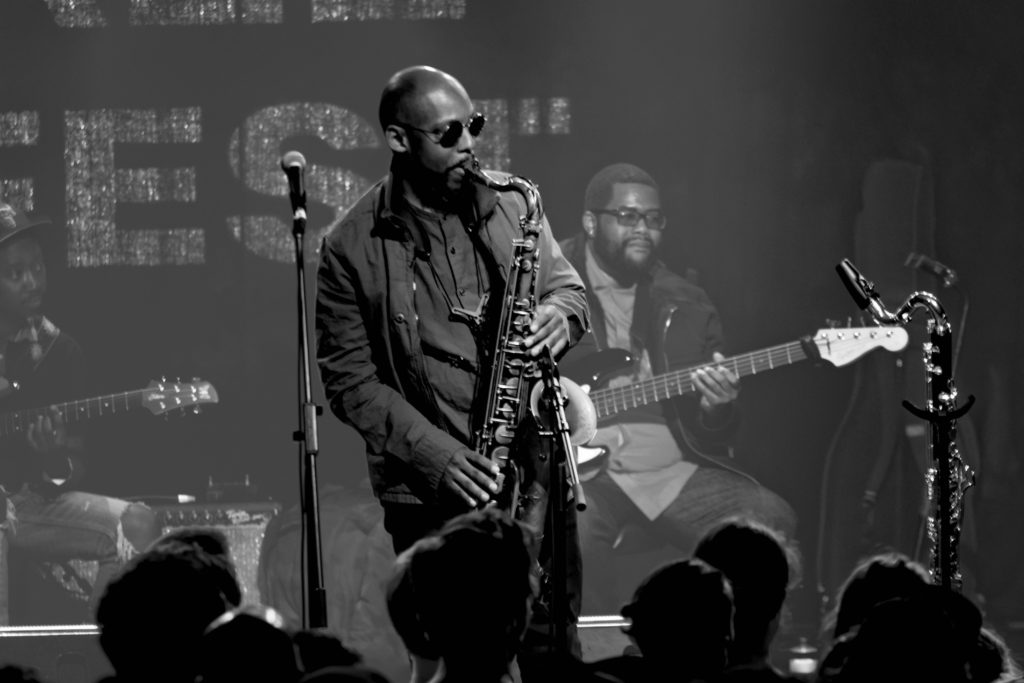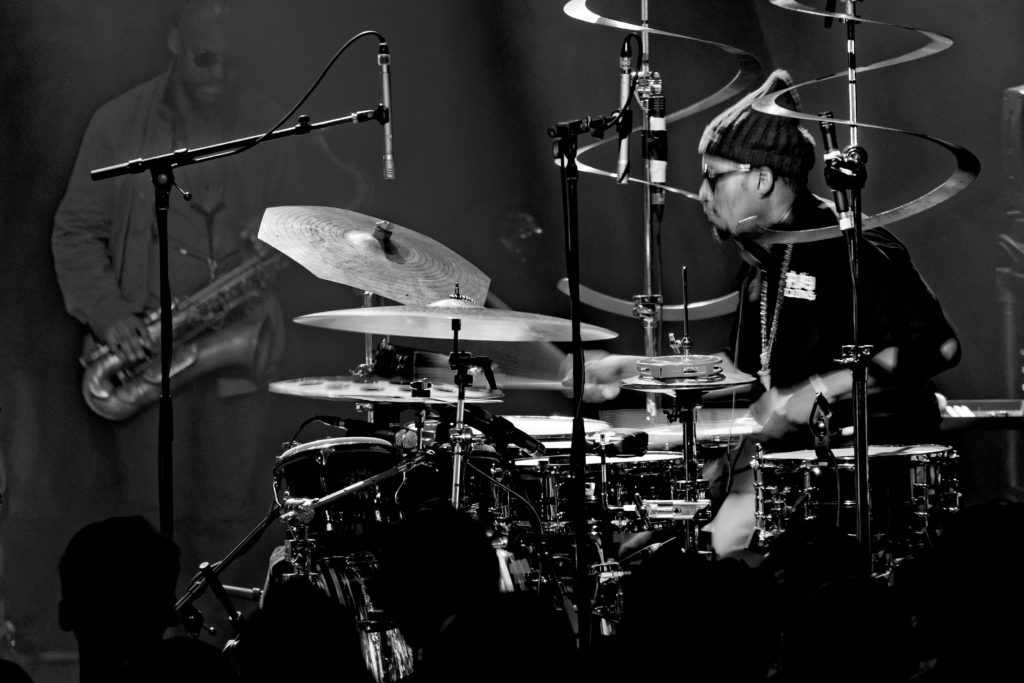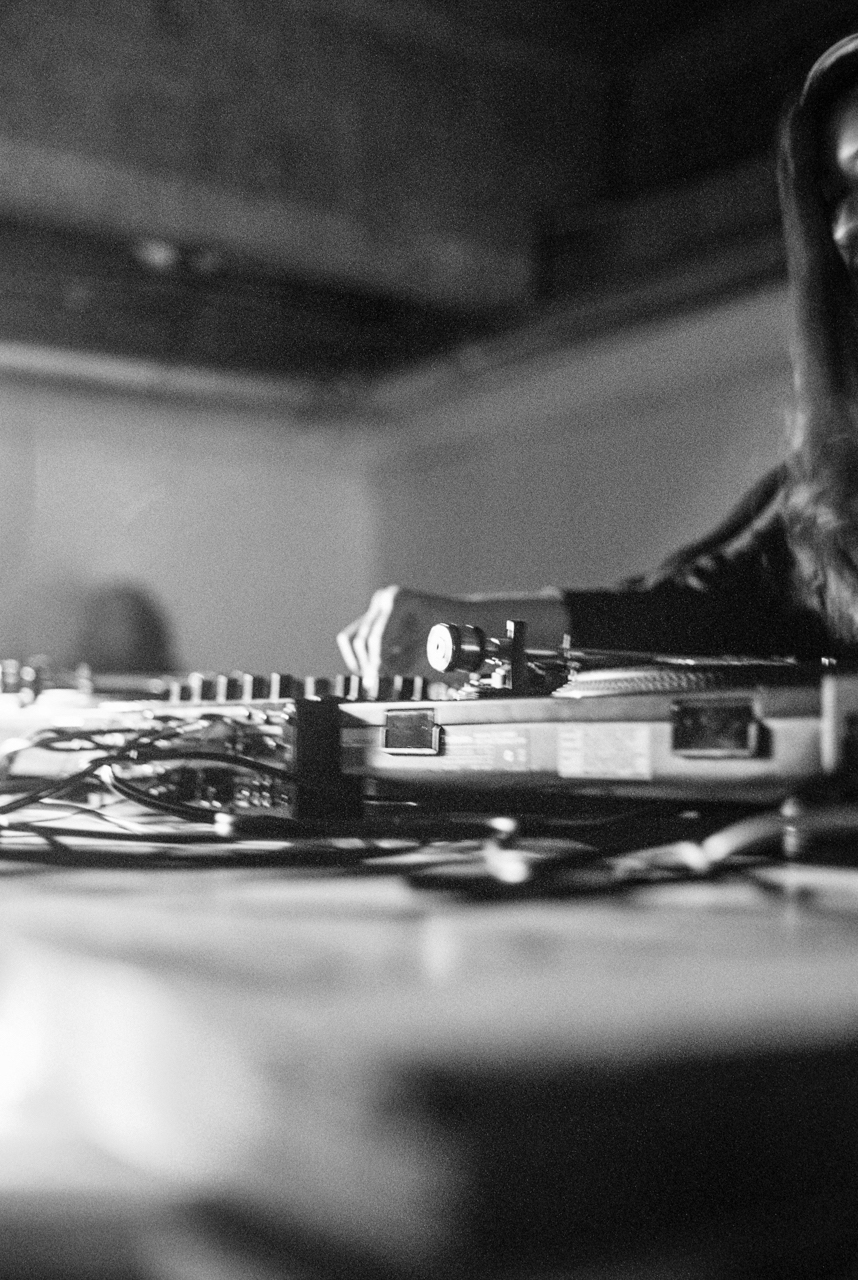CHRIS DAVE & THE DRUMHEADZ
An hour before the band is due to take the stage and already 170 Russell is packed. Clearly, Melbourne audiences are amped to see this band! Having received plenty of airplay on community radio in the lead-up to tonight’s headline performance, the crowd (which includes some of the local scene’s heavy hitters) know that their appeal is far broader than just straight jazz; stretching out across hip-hop, r’n’b, jungle and fusion.
But boy, do they make them wait for it! Over an hour after doors have opened and there is still no sign of the band. The DJ disappears and after about 15 long minutes of hip-hop mixtape, a flight-attendant voice tells us to “remain inside your bodies at all times, sit back, and enjoy your high.”
The opening salvo is practically desert rock, all flat 9ths and minimalism. It turns to a bare tiny moment of Phrygian noodling on analog synth before the bass player, Nick Mcnack, picks up the tempo with a busy upbeat funk line. The crowd cheers and out comes Marcus Strickland on tenor sax.
Their sound is dynamic, shifting with fluidity and restlessness, by turns busy and minimal. They settle into a groove for 30 seconds only to immediately break off, reloop and return.
This is some Brecker Bros hard-bop funk, with Dave Weck like drumming… agitated and yet somehow still smooth. Bobby Sparks takes a blistering overdriven solo. Tempos drift up and down, seemingly at random, but they’re way too tight for this to be anything but a brilliantly executed plan: these are minutely structured, incredibly detailed heads, rhythmically intricate and yet maintaining a kind of manic-samba unity throughout.
The texture peaks as the drums rips pure thunder and the organ shoves chromatically up and down, then an energised restraint as they break down for a moment and then close. Maximalist aesthetics rule. These are players at the top of their game who are interested in pushing each other to the limit.
Chris Dave steps out from behind his kit to introduce the band and to explain that being at one of his shows is like walking around a record store; you walk a few steps and suddenly you pick up a different sound. The next aisle we walk down is heavy distorted-groove hip-hop with grandiose soul vocal: a sinister Dr Dre feel with bass clarinet and palm mute guitar lines moving in unison over staccato organ melody. Strickland moves seamlessly between deep chalemeau and lyrical higher register melodics, proving once again how versatile this instrument is.
And then suddenly we’re in to a soul-shake shuffle with vocals tripping over troubles with love and police and money and politics… classic activist 70’s sounds that would make Gregory Porter or Marvin Gaye proud. It is almost unbelievable that mere minutes ago we were in the hard-bop jazz aisle and couldn’t stay in the same time signature for more than 4 bars!
Next, the tempo starts shifting upwards… we’ve found the Afrobeat aisle! Toggling between downtempo and faster versions of the format, Dave has total mastery of the style and the band knows how to follow the Tony Allen inflected rhythms to the logical next step: which is the James Brown funk aisle!
And now we’ve wandered down the solo jazz guitar ballad aisle. Flavours of Wes Montgomery and George Benson, again brilliantly, flawlessly executed and segued into funk for a bar, then solo guitar again, then shuffled broken beat. How does one do this kind of stylistic variety and maintain an artistic and aesthetic unity? It appears there is no colour they can’t play, no style they can’t embody. Now, here comes the drum’n’bass, in 3 different non-4 time signatures of course, plus tempo shifts. Perhaps the live environment in this case paradoxically belies how truly impressive this material is on the record.
The ability to nail these different styles and blend then with fluidity is extremely impressive. But I wonder if their show becoming a series of deftly executed references and stylistic gestures? Is there an absence of the originality promised by their opening statement? If their show is a record store, it’s as if the over-eager music nerd working there perhaps can’t resist pressing the stutter effect every 30 seconds, then flipping the next record they think of, never letting anything just play.
It is gloriously nerdy, and one thing is without doubt: clearly Melbourne loves this band. They turned out in force at a premium price on a busy Friday night and stayed transfixed to the very last note. What does this have to say about jazz in 2018? That perhaps less is no longer more: only more is more.








